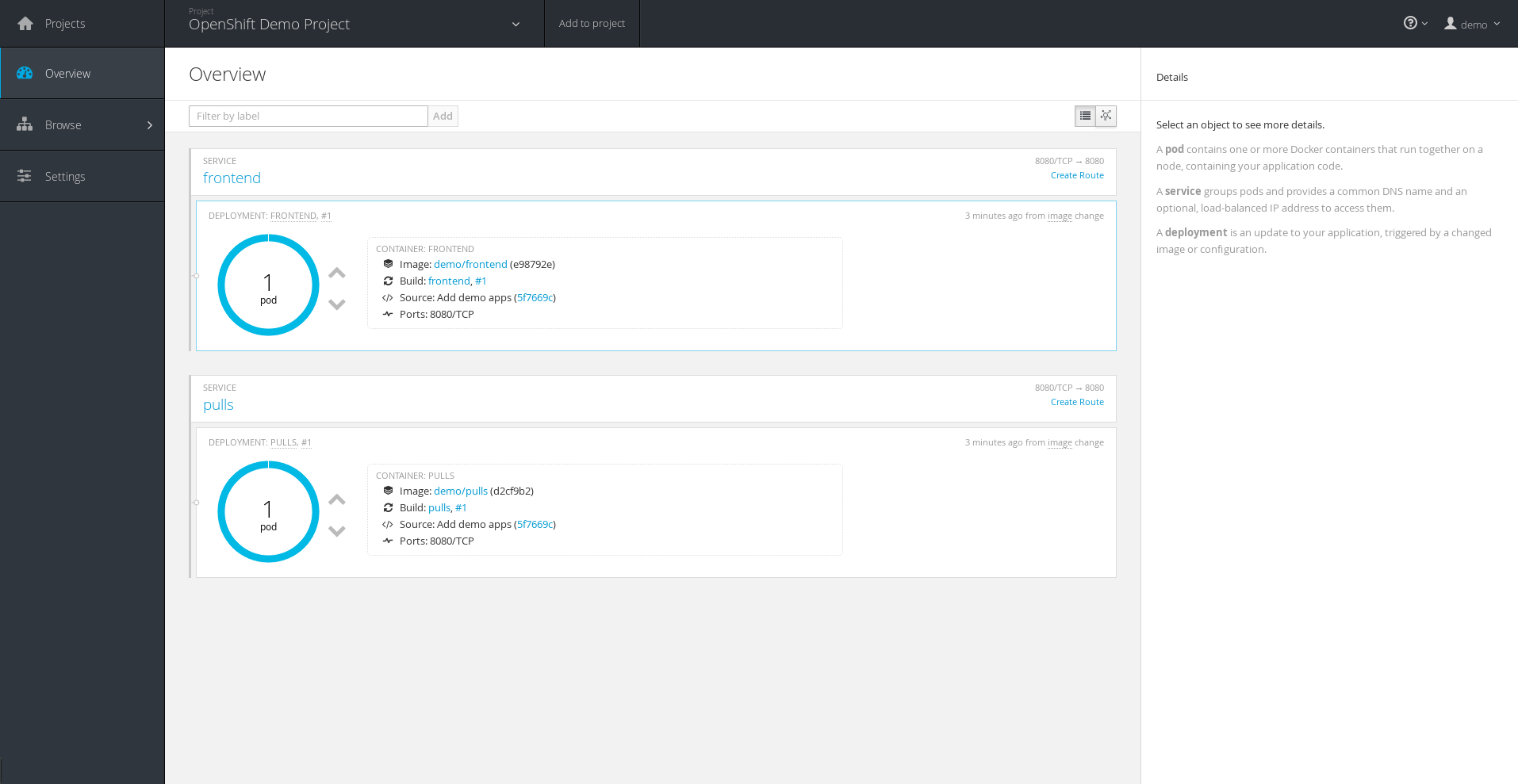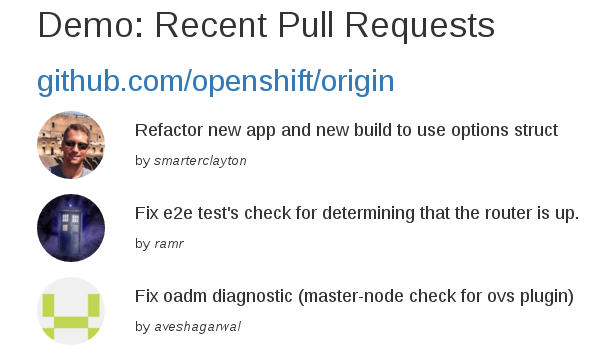Demo code for my presentation in PyCon SK 2016.
The instructions below cover how to use the example webapps in this repository. All examples are small Python applications based on the Bottle framework.
To build a new Docker image using the docker build command and
the Dockerfile in the
hello/ subdirectory, giving it the tag hello:
docker build -t hello hello/
When the build is complete, you can create/start a new container to run the demo webapp:
docker run --rm -it -P hello
See more options for docker run in the official
documentation.
With the Source-To-Image tool, instead of crafting your own Dockerfile, you provide source code and a builder image, a Docker image that knows how to build other images.
s2i build hello/ openshift/python-34-centos7 hello-s2i
In the example above, we build a new image with tag hello-s2i, using the
openshift/python-34-centos7 builder image and taking source code from the
hello/ subdirectory.
That builder image is officially supported by Red Hat, and publicly available
from DockerHub. It knows how to build Python applications and allows
customization of the build and run configuration through scripting.
You can download the s2i tool from the project releases
page.
The same process can be used to build the other examples in frontend/ and
pulls/.
OpenShift supports both Source-To-Image and regular Dockerfile-based builds natively. Installing and configuring an OpenShift cluster is out-of-scope for this demo.
The examples pulls and frontend work together. The former calls the GitHub
API to fetch recent pull requests to the OpenShift project. The latter renders a
template showing data fetched from the former. They are a very simplistic
demonstration of two components that form a bigger system.
To create a build configuration that builds each of the components, and a
deployment configuration that deploys each of them, use the oc new-app
command:
oc new-app \
centos/python-34-centos7~https://github.com/rhcarvalho/pycon-sk-2016-demo \
--context-dir=pulls \
--name=pulls
oc new-app \
centos/python-34-centos7~https://github.com/rhcarvalho/pycon-sk-2016-demo \
--context-dir=frontend \
--name=frontend
After the first build and deployment of the apps is finished, the OpenShift Web Console will look like this:
And accessing the frontend service will render:

